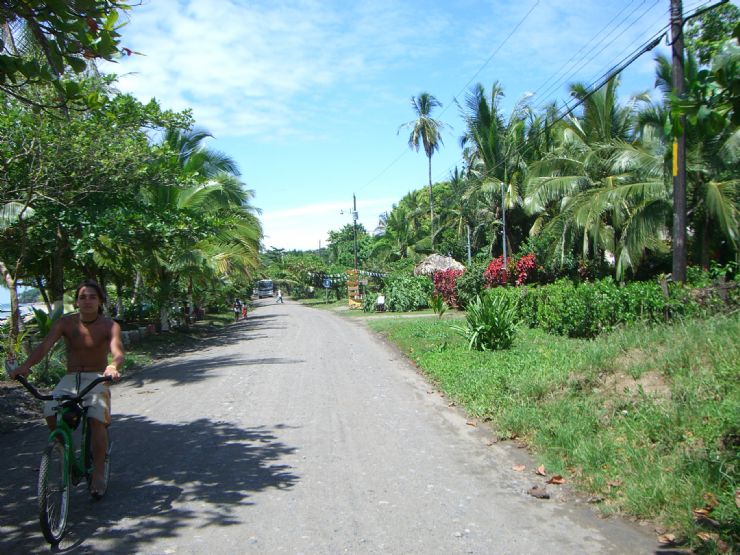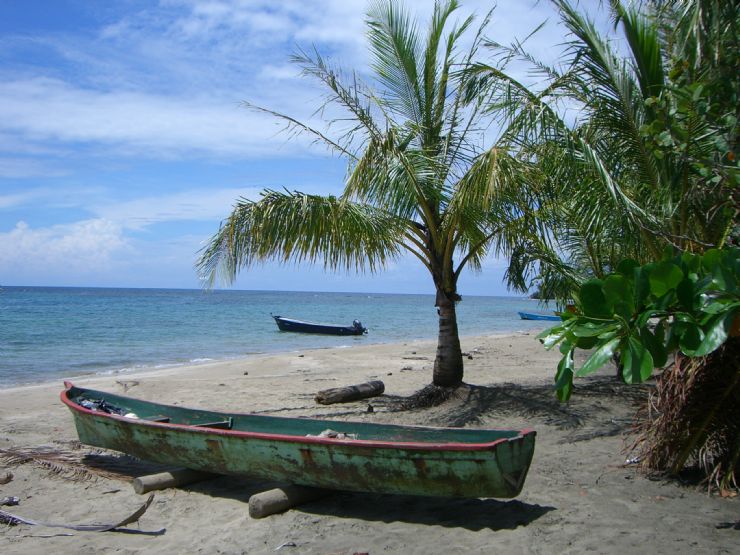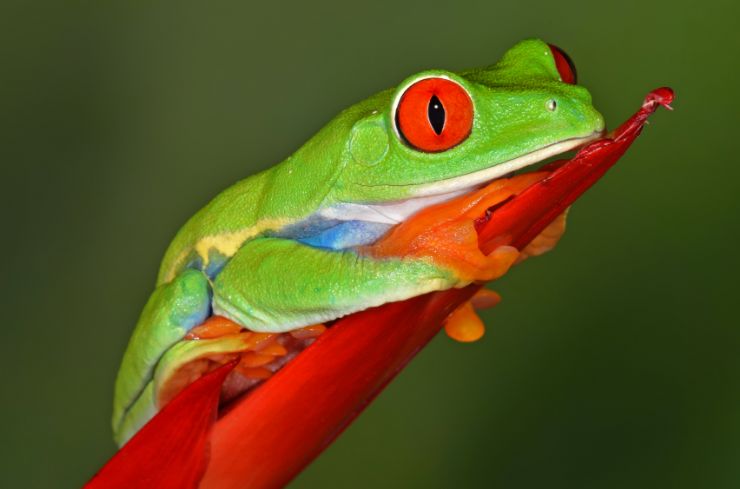.JPG)
Beautiful Caribbean Beach in Manzanillo
When you're planning what to do in Costa Rica, you should add the Gandoca-Manzanillo National Wildlife Refuge on Caribbean coast to your list! I might be a little biased, but this is truly one of the most beautiful places in Costa Rica. All of my brothers and sisters and I grew up in this area, and we have so many tree frog friends here - and many other animal species, too! The park is tucked along the Caribbean coast south of Limon and bordered by the Caribbean Sea to the east. Located just a few kilometers north of the Panama border, this wildlife refuge protects several rare and stunning habitats that are home to an abundant array of flora and fauna. The borders of this refuge are not completely defined, but it covers about 50 square kilometers of land and about the same amount of protected sea. This park was actually established so that a few of the country's last coral reefs were saved! Although I've never been to the coral reefs - it's hard for frogs to swim that far - I've heard so many amazing things about these and many people go snorkeling here to view them. Costa Rica all inclusive resorts are pretty sparse in this area so you may want to stay in nearby Puerto Viejo or just spend the afternoon in this region.

Road on the way to Gandoca - Manzanillo National Wildlife Refuge
Animals of the Park
If you visit Gandoca-Manzanillo, it's almost a guarantee that you'll see one of my relatives - you may even see me! We have a huge family, and most of us live here. We love hopping around the trees, and although we blend into the scenery, you may just see our bright red eyes pop out!
7 Days / 6 Nights
Starting at $779 per person
Head to the sea and you may just catch a glimpse of an orca whale! These massive creatures usually live in open tropical, temperate and polar seas, but they sometimes travel into the bays or mouths of rivers and can be seen in groups just about 800 meters away from the shore. If you're lucky enough, you may catch a glimpse of a killer whale breaching in the water as they come up for air and flap back down into the crystal clear ocean in a very playful tone.
Another popular species here is the leatherback turtle. These gals come to the shores to nest and then head back into the waters - all of which is done during the nighttime. If you plan your travels during their nesting season, you may see a few turtles leaving their nest and swimming into the ocean. Leatherback turtles are the largest of living turtles and are one of the largest reptiles in the entire world! Its limbs are somewhat like paddles that help them swim across the waters, and they are actually the only marine turtle that doesn't have claws.
There are so many more animals that live here, too, like woodpeckers, tarpons, dolphins, eagles, toucans, sea cucumbers and so much more! I love being here because there are so many new friends to make, and many wonderful animals that play a role in making this park so special.
In the freshwater Gandoca Lagoon, mangrove trees are surrounded by streams and creeks that eventually lead out to the sea in two different spots. This is where you may catch a glimpse of a manatee or the rare estuarine dolphin, as well as crocodiles and caimans.

Caribbean Canoe at Playa Manzanillo
Habitats
I know I say there are a lot of great things about this park, but it covers such a vast and diverse area, which makes it hard to choose what the best is! There are several rare habitats here like a wetland area, mangrove swamp and a lowland rainforest - it actually is home to the only mangrove swamp in the Atlantic. Because of this tropical vegetation and the park's remote location far from any town attracts many tropical birds, including more than 360 species.
When to Visit?
The best time to visit this park is during the dry season, which is between March and April and then again September and October. I love this park because it gets so much rain throughout the year, but humans tend to not like rain as much as frogs.
Getting Here
If you're coming from the San Jose airport or your hotel in the city, you'll take the main highway to Limon and then head south through the town of Cahuita. Getting to the actual park gets a bit more challenging, because like many other reserves in Costa Rica, there are only a few dirt roads that lead here. If you want to reach northern Manzanillo, you'll head through Puerto Viejo and take that road through Punta Cocles and Punta Uva.

Red Eye Tree Frog - One of my many cousins in the Gandoca - Manzanillo National Wildlife Refuge

